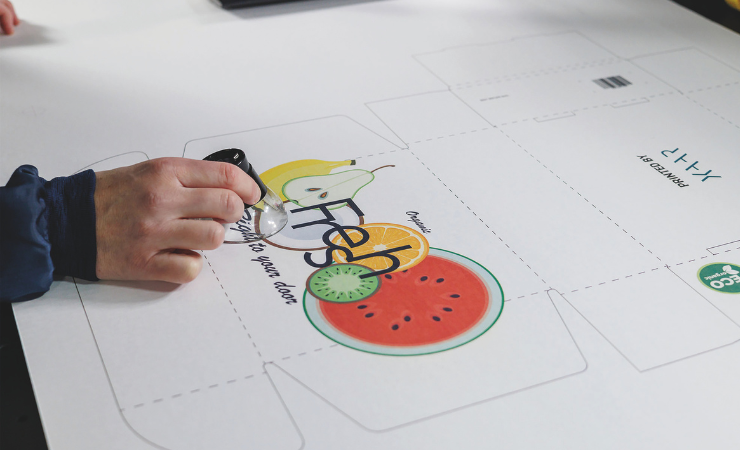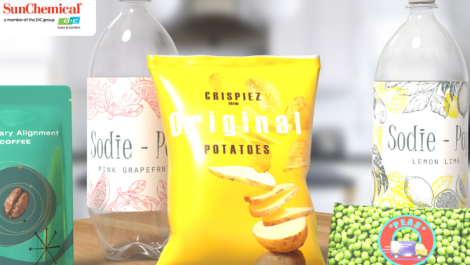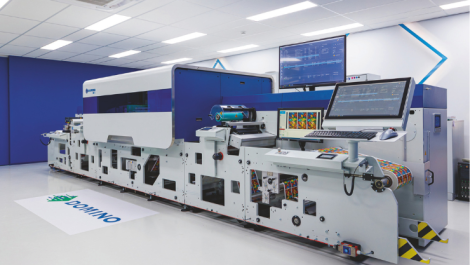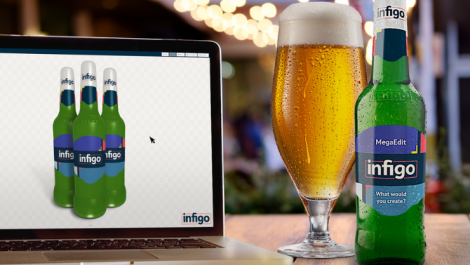In the war for market dominance between the various inkjet press manufacturers, the printhead has become the point of difference in being able to turn the battle one way or the other. By Michal Lodej
So much of the inkjet print process is dependent on the performance of the printhead; quality, speed and consistency. Three attributes every printer of every faction clamour to receive from their equipment suppliers. However, there are many more factors that are just as important to the modern digital printer.
Modern printheads have also made great strides in precision and reliability, largely due to breakthrough developments in microelectronics and sensor technology. Today’s high-resolution printheads integrate advanced control systems that ensure rapid, consistent droplet ejection, which is essential for achieving sharp, high-resolution prints. These advancements allow digital printers to produce intricate designs and vibrant colour profiles, meeting the increasing demand for premium quality packaging.
Other vital attributes for printheads are longevity and robustness. According to Gallus, the development of ultrasonic and automatic cleaning systems for the Gallus One has greatly extended the lifespan of printheads while reducing maintenance requirements.
In the past, manual cleaning of printheads was a common practice. However, this method is time consuming, can unnecessarily extend downtime and carries risks, as improper handling can damage the printheads. With the introduction of ultrasonic and automatic cleaning technologies, maintenance efforts are minimised, printheads remain in optimal condition and increased uptime of the press is enabled.

The Domino N730i uses Bitstar printheads from Brother
Furthermore, the robustness of modern printheads have dramatically increased, which aids in scheduling tight production runs, and allows printers to maintain high-quality results and keep productivity up. For example, when printing at speeds of up to 70 meters per minute, even high-opacity white can be produced with the Gallus One without slowing down the production process.
On the theme of robustness, Mark Andy’s product manager, Ben Luly said: “Our stainless-steel heads are more robust and reliable with far fewer nozzle outages, making them the preferred choice for labels. We have a better colour gamut, and twice as many grayscale levels as silicon heads, not to mention a higher running speed. If you need consistent performance in manufacturing across many batches, there is only one choice.”
The heads used on Mark Andy’s Digital Series HD offer a white consistency above 82% opacity. Mark Andy’s inter-colour pinning design allows converters the ability to optimise performance across a wide range of substrates – other integrators do not have full colour pinning, which impacts on their capability to print consistent quality.
Getting the balance right
Recent advancements in printhead technology have focused on balancing higher speeds demanded by converters with better control of ink droplets to meet print quality requirements.
As print quality perception can be subjective, quality results can vary for the top speeds that every printhead manufacturer is willing to offer. For the Brother Bitstar printhead used in Domino’s N730i digital label presses, there is a bias towards print quality, with screening technologies and electronic waveforms utilised to preserve print quality and colour gamut.
Julie Cross, technical director, Domino Printing Sciences, explains: “The waveforms used to activate the ejection of the ink determine how the printhead will perform and how the ink will break up, which in turn can have a great impact on how often a converter has to stop the press to clean the nozzles, with any downtime reducing productivity.”
Press productivity can also be affected by ‘cross talk’ between adjacent inkjet nozzles in the printhead. Cross talk interference between nozzles as the piezo crystals contract and expand can impact droplet placement accuracy, as well as the volume of ink dispensed, potentially producing uneven distribution of colours, blurring, or other visible defects.
Ms Cross continued: “The Brother Bitstar printhead addresses cross talk with a unique, patented triple layer polycrystalline micro piezo technology which minimises cross talk and delivers precise nozzle control. This helps to ensure optimum drop placement accuracy and superior print results, reducing label waste, and eliminating costs for reprint of defective labels.
“By controlling the design and manufacture of the printhead, ink, and ink system within N730i label presses, we are able to develop waveforms that are optimised to deliver the best print results for the piezo crystals and the ink, benefiting the operation of the press as a whole. All parts of the press, from hardware and electronics to software and inks, can be set up and fine-tuned to work together efficiently to be able to deliver maximum productivity.”
Work smarter
One of the most significant improvements in printhead technology is the incorporation of smart electronic components. Simon Edwards, technical director at Global Inkjet Systems, explains: “These components provide real-time data monitoring, enabling dynamic adjustments during the printing process. This not only minimises errors and wastage but also optimises the speed at which printers operate. Enhanced feedback loops and self-calibrating mechanisms further contribute to improved uptime and reduced maintenance needs, which are critical factors for high volume production lines.
“Connectivity enables faster, more reliable transfer of print job data, reducing latency and allowing for real time monitoring and troubleshooting.”
“In addition to improved printhead mechanics, the evolution of associated electronic drivers has been pivotal. Modern drivers are engineered for higher processing speeds and better integration with the overall printing system. They manage the intricate balance of electrical control that governs each printhead nozzle, ensuring that every droplet is delivered with pinpoint accuracy. Recent developments have seen the emergence of intelligent drive electronics that are capable of executing numerous print operations internally. This advancement minimises the reliance on external processing, streamlining the workflow and reducing latency, which is particularly important for the packaging industry where even minor defects can compromise brand integrity.”
Furthermore, the integration of Ethernet communications into digital printing systems has streamlined data exchange between components and across the network. This connectivity enables faster, more reliable transfer of print job data, reducing latency and allowing for real-time monitoring and troubleshooting. Coupled with image-aware data paths, printers can intelligently adjust print parameters based on image content, leading to improved colour matching and overall print quality.
New markets
Xaar has spied an entry into the corrugated packaging printing sector, with its recently launched Ultra High Viscosity Technology within its Aquinox printhead. The printhead can jet fluids of up to 1000 centipoises (cP) at ambient temperature (approx. 100 cP at jetting temperature). This has enabled chemists to develop ink formulations that minimise ink absorption into corrugated surfaces to produce high opacity and colour vibrancy, ensuring both visible appeal and durability for corrugated packaging.
By absorbing less ink into the board, the same print quality is achieved with less ink, enabling faster printing and significantly reducing production costs as well as the total cost of ownership. Printing with the new water-based high viscosity inks developed by Nazdar easily meets the demands of even the fastest corrugated packaging production lines.
While much of the print machinery chat revolves around dpi and metres per minute, it is clear that now, in the modern print room that precision, reliability, longevity, robustness are just as important as feeds and speeds. What’s more when combined with smart electronic components, the printhead, at the vanguard of the inkjet print process, can accelerate print productivity to new levels.






